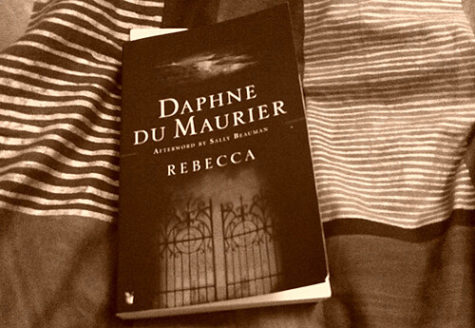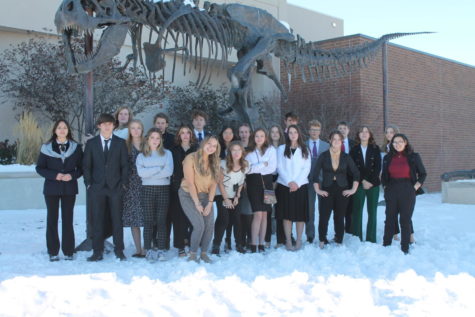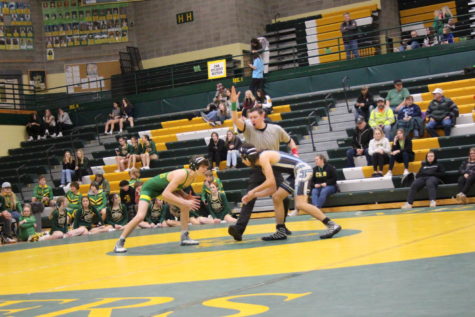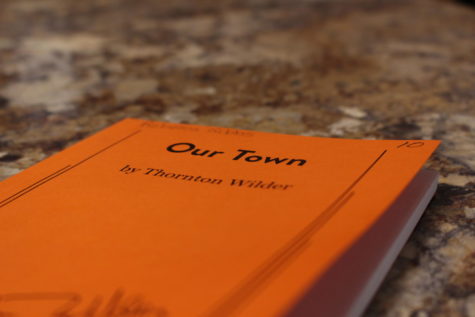“Flame in the Mist”
Photo by Stampede
February 21, 2019
“Be as swift as the wind. As silent as the forest. As fierce as the fire. As unshakable as the mountains.” – Sun Tzu, The Art of War
Based in a world inspired loosely by feudal Japan, Renée Ahdieh’s “Flame in the Mist” begins with a young boy being forced to watch the execution of his father who has been convicted of treason against the Imperial Emperor.
The scene switches as the first chapter begins, focusing instead on Hattori Mariko, the daughter of a prominent samurai, and the betrothed of the emperor’s oldest son, born out of wedlock and thus not set to inherit the throne.
While on the way to the Imperial Palace, her palanquin is attacked by a group of men dressed in black, presumably the notorious Black Clan which haunts the demon-infested forest. Mariko is the only one who survives the attack and becomes intent on finding out why the clan was sent to kill her.
Her adventure leads her to disguise herself as a boy and infiltrate the clan whilst her twin brother works to get to the bottom of the attack all while struggling with the question of whether or not his sister is alive.
A YA book is never complete without a love interest, and Ahdieh provides one in the form of Okami–a name which means ‘Wolf’ in Japanese–a skilled warrior of the Black Clan who is later revealed to have made a pact with a demon in order to gain the extraordinary skills he possesses.
As the book nears its conclusion, we find that Okami is actually the boy from the beginning of the book. The only thing that surprised me there was that his best friend and the leader of the Black Clan was the one who wore the name of the condemned son while Okami took his friend’s old name. Supposedly for protection, but that point is further argued in the second book.
Now we get into the criticism of the book by yours truly: girl who goes through her annotations of “Les Misérables” when she has writers block.
I suppose the best place to start is the beginning wherein we meet Hattori Mariko. While I do highly appreciate the use of third person narrative, Mariko comes off as a whiny rich girl who thinks far too highly of herself. As the book progresses we find that Ahdieh worked Mariko’s narrative in this way purposely, but that would usually imply that this narrative was later changed. In one word: no.
Ahdieh made a valiant effort to expound upon Mariko’s character as she grew closer to the men in the Black Clan, starting to recognize and resonate with the views of the common people rather than those of the upper class. I appreciate the attempt at turning the minds of teens towards the proletariat class, but it fell flat when, at the end of the book, we find that both Mariko and Okami are part of Ye Olde one percent, Mariko being forced to return to her restraining life of luxury at the location of the clan by her brother and her betrothed. Oh woe is me!
Then, of course, we are face with the love interest, Okami, who is what we would call a ‘Tik Tok Bad Boy.’ He’s broody, he’s angst ridden, he only communicates with his best friend, he has a soft soul somewhere beneath all that shaggy hair, he’s an old trope attempted to be spun in a new light. He also spend a majority of the book thinking Mariko is a boy.
While I do appreciate the–thinly veiled transphobic–bisexual representation, I find the most obscure thing to be Okami’s willingness to jump Mariko’s bones as soon as he sees she has boobs. And that’s what happens. When climbing a rain-slicked–because it’s raining, of course, this makes it more romantic–cliff to pick foxglove to feed to the men of the Black Clan, she topples into the hot springs below. Okami is watching broodingly in the distance, and when Mariko does not resurface he rushes to save her, because he has a martyr complex even though is quoted to hate Mariko.
Nonetheless, he rushes in and pulls Mariko from the pool where he notices something that is about to change his life: boobs. Nevermind that he had spent the whole book thinking that Mariko was a man and, in turn, detesting her, the two hook up immediately and begin their love-hate relationship that is riddled with toxic undertones.
Then comes the trouble of Ahdieh’s description of Mariko’s character, most notably the idea that she is a ‘noted alchemist.’ I began reading this piece with an expectation that she would be able to do something akin to that which we see in “Fullmetal Alchemist,” but was sorely disappointed when it was revealed that she was only a sub-par inventor with a knack for making things explode. For a while I simply accepted this as something I would have to deal with, but when demons came into play in the book, I had to step back from what I was reading.
If you can have Okami making a pact with a creature of Hell and the mother of Mariko’s betrothed using enough magic to effectively take over the kingdom with mind control, why couldn’t you have given the main character some more intricate abilities? While I love female characters that build themselves from nothing, Mariko is said to have an extraordinary affinity towards alchemy, but this rarely comes into play, and often in ways that are never mentioned again and contribute nothing to the plot.
While I do find the book a good feminist title–in the sense that it’s YA and thus heavily influenced by romance–and a valid attempt on Ahdieh’s part to introduce readers to problems between societal classes, I feel that she missed the point by a mile. She went into “Flame in the Mist” expecting to write something that had the ability to unseat Mulan in its ability to empower young girls and came out with something that left a sour taste in my mouth. The book moved slowly and was loaded with characters that made the read a bit too tedious.
Nonetheless, it was an enjoyable and cute read and I would suggest it for anyone that wants to incite in themselves a sense of feminism on its face level.













